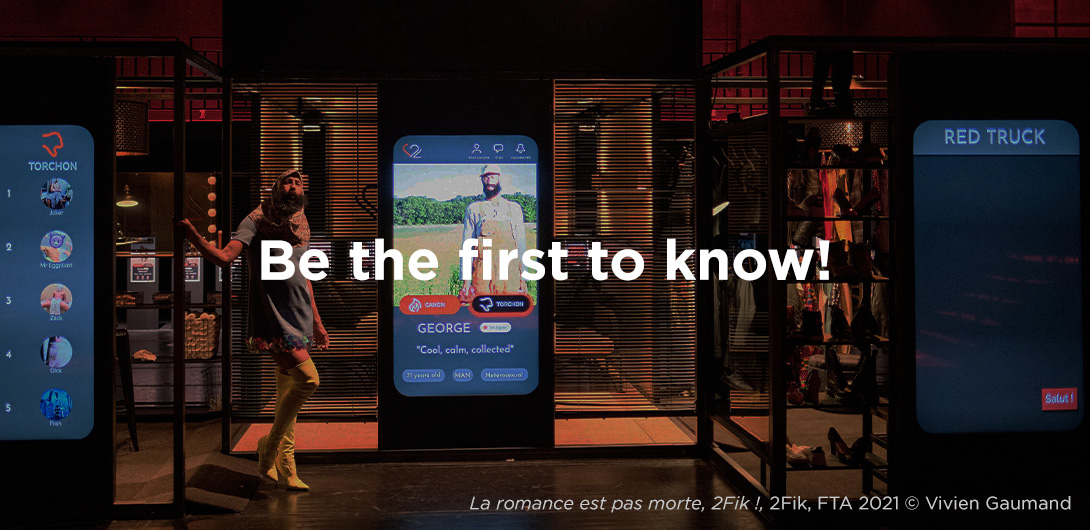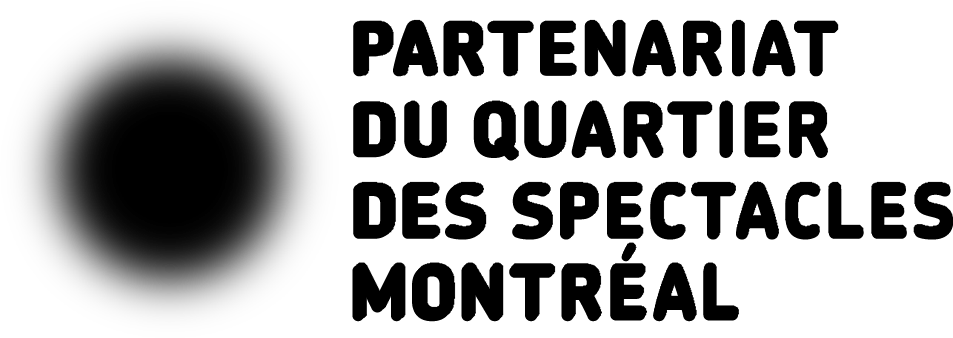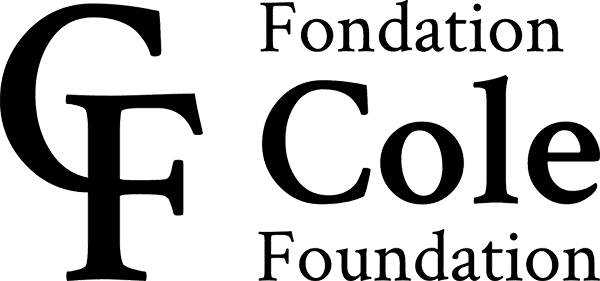2020 will be remembered as an ill-fated year, an extremely trying period for all. It is now time, as a new year begins, to catch our breath, to take stock of the positive things that despite everything have been achieved through our persistent efforts and hopes, however modest they may be.
It is this tenacity that inspired me throughout the fall in my discoveries of each of the FTA Breathing Space.
Three choreographers in particular drew my attention for their ability to deal with the unpredictable, while standing firm against the new reality. While the city has more or less emptied itself as a “remote” mode takes over, these three artists have gone out to confront these spaces and the ways we inhabit them. By firmly rooting themselves in the present, they have adopted a different work rhythm in pursuing their research, whatever the cost.
The Conditions – Lucy M. May
Lucy M. May is a dancer and choreographer from New Brunswick, now based in Montreal. At FTA 2020, she was scheduled to present Anima / Darkroom (2019), created in collaboration with the Krump artist 7Starr. Since October 2019, she has been working on The Conditions, the third in a series of works investigating the ecologies of place.
Through her works, Lucy M. May explores the relationship between the body and its environment: how is the body transformed when it comes into contact with the space, and how is the space transformed by human movement? The artist seeks to understand what connects the infinitely large with the infinitely small, what motivates every physical reaction, however imperceptible – a tear, a shiver, butterflies – and how these sensations influence her gestural art.
“What binds micro to macro? Macro to micro?”
– Lucy M. May
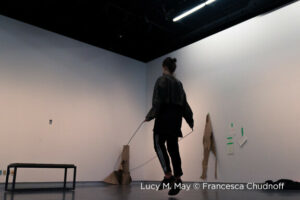
The Conditions is an installation for gallery space, a site conducive to silence and meditation. In communion with the exhibited works, the dancer makes the space reverberate with her physical energy and emotional impulses, leading us to reflect on our own presence in the gallery. The experience of the visitors in this intimate space is not unlike that of performers in the process of improvisation. While turning inward, toward the self, our gaze is impacted by its contact with the outside, with the other, with its surroundings.
The Conditions has already brought together a large team. Lucy M. May is accompanied by cut-paper artist Maisie O’Brien, lighting designer Jon Cleveland, visual artist Francesca Chudnoff, composers Patrick Conan and Vicky Mettler, and dancers Ja Britton Johnson, Sovann Rochon-Prom Tep, Marie-Reine Kabasha and Peter Jasko. As she awaits a return to the galleries and rehearsal spaces, the choreographer is preparing a musical score with her team.
no place – Amanda Acorn
Amanda Acorn, a choreographer based in Toronto, incorporates into her work a bodily dynamic rooted in movement and therapeutic care. The support she receives from FTA Breathing Space is a way for the Festival to continue the dialogue that began in 2016, when she presented the immersive and mesmerizing multiform(s) at the FTA.
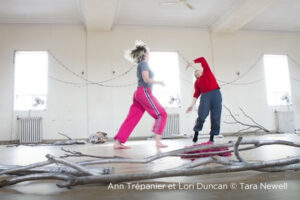
Amanda Acorn has been working for over a year on no place, which features six dancers (Robert Abubo, Lori Duncan, Bee Pallomina, Ann Trépanier, Benjamin Landsberg and Justin DeLuna) in an installation by visual artist Lauren Wilson. The work investigates the notion of utopia as a way of being. The choreographer views living together as a function of empathy. At the heart of her artistic process is a malleable creative space stemming from collaborative improvisation, always in tune with the sensibilities of each performer.
no place attempts to connect the natural with the industrial, the animate with the inanimate. The performers enter into a dialogue with matter, both organic and artificial: painted branches on the ground, textured prostheses, transformed objects. The bodies—half-human, half-material—construct and deconstruct landscapes in a choreography that blurs the boundaries of perception. The performance is anchored in a hybrid, sculptural space that allows us to better dream the utopia it invokes.
While the pandemic forced the choreographer to interrupt the physical work, Acorn cleverly re-routed the creative process on-line last summer. She is currently continuing her reflections on the interdependence of body and its environment through costume- design collaborations with artist Sarah Doucet.
Le fil des jours – Catherine Lavoie-Marcus
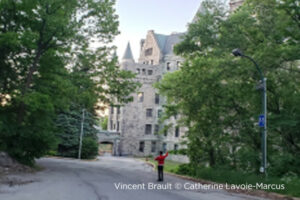
The project of choreographer Catherine Lavoie-Marcus, which took root in the midst of the pandemic, arose from an overwhelming need to regain our bearings. It was in this context that the FTA became interested in the artist’s work, when it seemed increasingly unlikely that a community-based dance practice could ever be envisaged. Le fil des jours nonetheless features 17 performers and three musicians in a work danced in situ, and a score that makes it possible, despite everything, to “meet without gathering together.”
Like Lucy M. May and Amanda Acorn, Catherine Lavoie-Marcus listens to human bodies, both those of the performers and those of the audience, to their interrelationships and their connections with the space. In a silent gestural relay, the dancers take the audience of Fil des jours on a choreographic excursion to (re)discover the former Royal Victoria Hospital on the flank of Mount Royal, which was decommissioned in 2015.
“What can our collective voice achieve in the rehabilitation of such a colossal structure?”
– Catherine Lavoie-Marcus
While some of its buildings have been temporarily converted into, among other things, a homeless clinic and a shelter for asylum seekers, portions of the Royal Vic will soon be renovated and reassigned. Will its community vocation be preserved? Through this work, Catherine Lavoie-Marcus seeks to raise public awareness of a very prevalent concern: what kind of relationship are we to have with our city, our infrastructures and those who use them?
Faced with the problems of meeting due to pandemic restrictions, the choreographer has responded by rejecting individual isolation. If there is distancing, it will be experienced as a group: one and all against adversity. Although the onset of winter has made rehearsals more difficult, the project has nonetheless proceeded over the past few months, thanks in part to the support of the Leonard & Bina Ellen Art Gallery at Concordia University. In October 2020, a phase of the work was completed for the gallery’s upcoming exhibition, Aller à, faire avec, passer pareil by Edith Brunette and François Lemieux.
A time for care
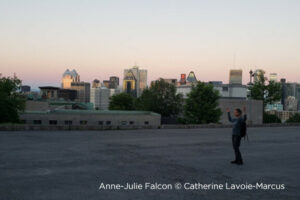 The works now underway by Lucy M. May, Amanda Acorn and Catherine Lavoie-Marcus question the manner in which we inhabit our bodies, both individual and social, as well as our environment, our relationships, and the way we take care of them.
The works now underway by Lucy M. May, Amanda Acorn and Catherine Lavoie-Marcus question the manner in which we inhabit our bodies, both individual and social, as well as our environment, our relationships, and the way we take care of them.
They invite us to pause, to rethink our criteria of wealth, and to focus on certain crucial issues that have confronted us for almost a year now. How can we take care of the care centres, and pay tribute to those who provide care on a daily basis? How can we take care of our spaces of contemplation, our imagination factories?
Here dance becomes a source of calm and appeasement, a much-needed remedy in these uncertain times.
